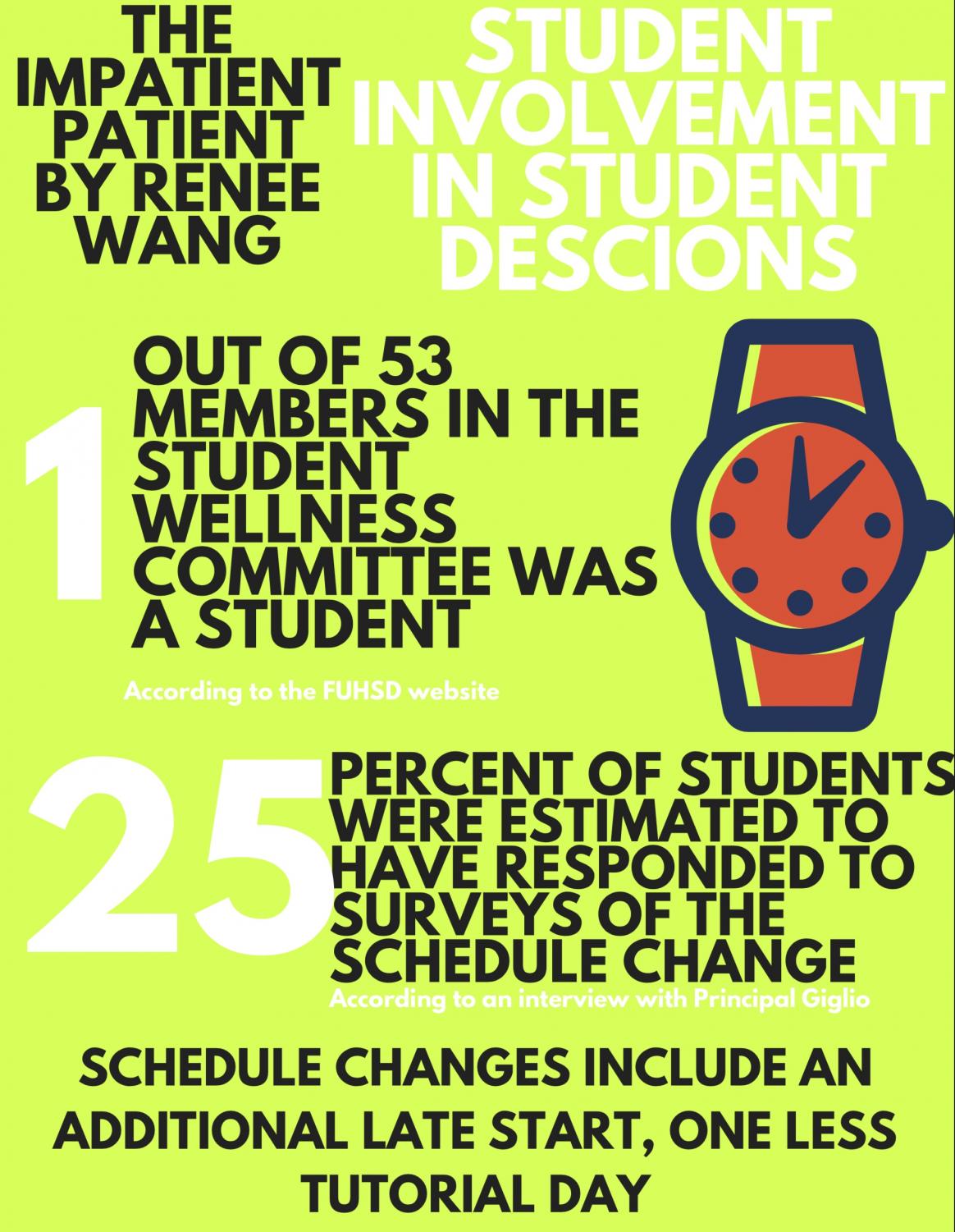The Impatient Patient: Decisions affecting students should involve students

T
he new bell schedule is perhaps one of the biggest changes in the 2018-2019 school year — yet in the two-year process of revising the schedule, outreach to students was lackluster and minimal, despite the fact that students would be most affected. This lack of outreach is evident in the new set of issues the schedule brings about.
The schedule was revised by the Student Wellness Council created by FUHSD, yet out of the 53 members, only one is a student, attending LHS. The fact that there is only one student involved in a committee meant to serve students is ineffective. One student on the board is not adequate representation of all the issues the five FUHSD schools face.
Although surveys were sent out to students regarding a schedule change, it is estimated that they only reached 25 percent of students.
With the revised schedule, students attend school at 9 a.m. twice a week, and 8 a.m. three days of the week. The new schedule saves students an additional hour and 40 minutes of sleep.
However, according to the American Academy of Sleep Medicine, schools should start no earlier than 8:30 a.m. While Senate Bill 328 proposed this start time as well, the new schedule does not abide by this guideline.
Had the 8:30 a.m. start time been adopted, students would receive 2.6 hours of sleep, assuming one late start day, compared to what the current schedule offers.
Although students with an empty first period in our current schedule would have the opportunity to come to school after 8:30 a.m. each day, not every student opts for one. And, because not every student is able to obtain an empty first period, this option blocks off a portion of students.
There are several stipulations that come with opting for an empty first period — for example, students taking the usual six classes will be required to have a seventh period, which ends later in the day. As a result, this interferes with after-school athletics.
Another issue is the reduction of tutorial days — from four to three — poses the issues of crowded classrooms, and fewer chances for students to get the help they need. Because there are fewer tutorial days, concentrating tutorial time rather than spreading it out, certain classes will have a greater influx of students.
Furthermore, students involved in extracurriculars may have mandatory club meetings or required tutorial meetings, and this cuts into the already little tutorial time given. 35 minutes, one teacher and a line of students waiting for help is definitely not an effective use of tutorial time.
I have no doubt that the Student Wellness Committee worked tirelessly to bring about the schedule change and I understand that large-scale decisions such as a district wide schedule change will never satisfy every single person.
However, the fact remains that decisions affecting students should involve students — and perhaps had there been more student outreach, these issues could have been resolved earlier.







